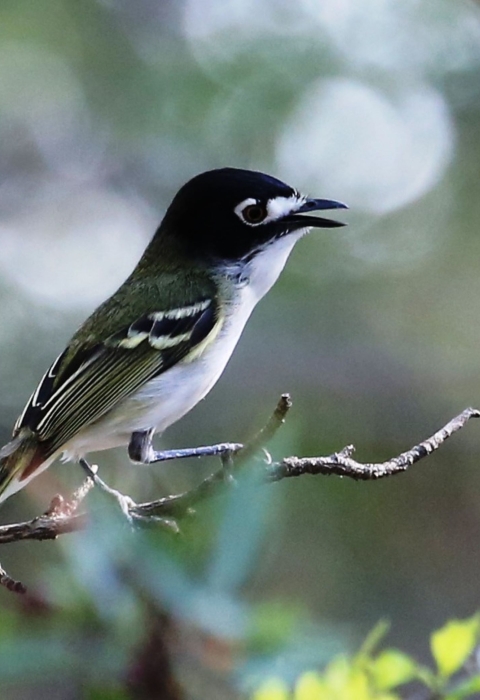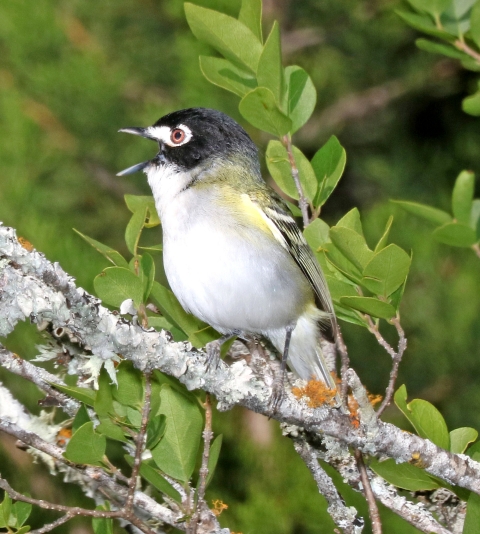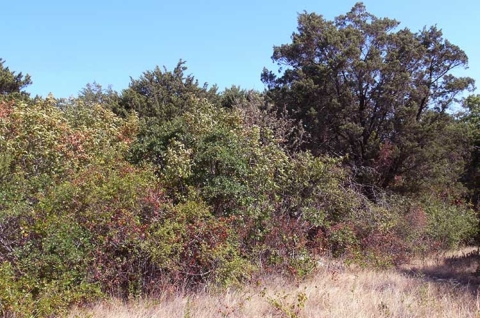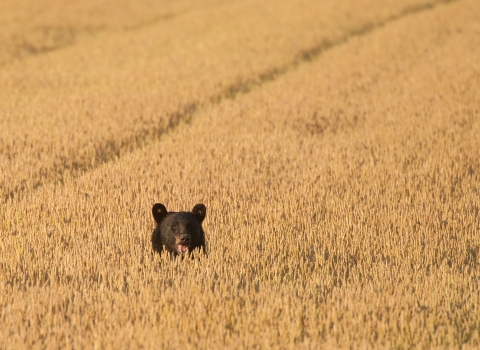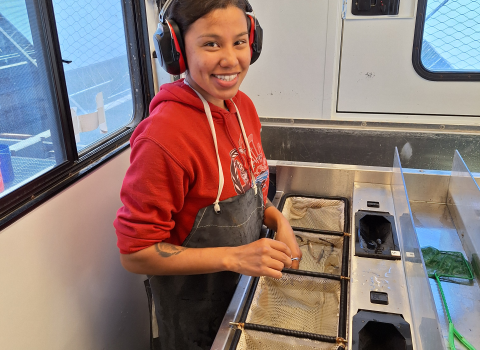In April 2018, after more than three decades of intensive conservation efforts, the Black-capped vireo, a migratory songbird, was deemed recovered and removed from the list of federally protected endangered species.
“By working with our many partners, we were able to conserve a North American songbird that once perched on the brink of extinction,” says Amy Leuders, Regional Director for the U.S. Fish and Wildlife Service’s (Service) Southwest Region.
That is not hyperbole. When the Service listed the Black-capped vireo as endangered in 1987, there were only 350 individual birds known to exist. Moreover, these few birds contended with such daunting circumstances that recovery looked all but impossible.
Measuring just four-and-a-half inches, the Black-capped vireo is the smallest member of the vireo family that occurs regularly in the U.S. Sporting its namesake black cap, the bird uses spider web strands to fasten their nests onto the branches of shrubs a few feet above ground. The vireo, which winters along Mexico’s west coast, once ranged in large portions of Texas and Oklahoma, and as far north as central Kansas during breeding season.
But as the natural landscape gave way to urban and agricultural development, the vireo’s breeding range was drastically reduced to central and west Texas, with just a few tiny, scattered, remnant populations left in southern Oklahoma and northern Texas. And, until the repeal of the National Wool Act Amendments of 1993, goats throughout central Texas decimated the shrubby cover the bird needs to conceal its nests.
Further exacerbating matters for the vireo has been brood parasitism by the brown-headed cowbird, so named because of its association with cattle, which keep grasses cropped to lengths that make it easy for the bird to snatch insects. A stocky blackbird that lays its eggs in the nests of other birds to the detriment of the host bird’s chicks, the cowbird has been known to wreak havoc on the nesting success of more than 200 bird species.
Cumulatively, these issues produced a rather grim prognosis for the vireo—and presented a profoundly difficult conservation challenge that would require coordination between many partners.
One of the largest heavy maneuver training sites in the country, Fort Hood, in central Texas, may seem an unlikely setting for songbird conservation. But, as a designated Globally Important Bird Area by the National Audubon Society and the American Bird Conservancy, the installation worked diligently to protect its avian residents, including its Black-capped vireo population.
To this end, the base has been instrumental in battling the menace of brown-headed cowbirds, which were very common when personnel there began monitoring vireos in 1987. Following intensive research on cowbird ecology, biologists on post designed and deployed cowbird traps at locations where cattle tended to concentrate, greatly reducing vireo nest parasitism.
"The delisting of the Black-capped vireo is the result of considerable effort over the past 31 years in which Fort Hood played a large role," says David Cimprich, lead endangered species biologist for Fort Hood. "The cooperation between our leadership here on post and the Service provides an example of successfully balancing the needs of military training and endangered species."
Elsewhere in the vireo’s breeding range, the Texas Parks and Wildlife Department worked on behalf of the bird on many of its lands throughout the state. In addition to cowbird control, biologists in the early 1980s developed a holistic approach to vireo conservation that includes rotational cattle grazing and prescribed burns to encourage the regeneration of shrubby nesting habitat, and a comprehensive deer population management program.
“We equate healthy vireo habitat with healthy deer habitat,” says Clayton Wolf, the department’s wildlife division director, “and we convey this message at several of our Wildlife Management Areas and through a technical guidance program that serves as an effective way of getting hunters and landowners behind our work with these birds.”
Others were instrumental in the bird’s recovery. In addition to generating research that guided Fort Hood’s cowbird management efforts, The Nature Conservancy manages four preserves in Texas, totaling about 30,000 acres, much of which support robust vireo populations; the Environmental Defense Fund led an effort known as Safe Harbor allowing private landowners to assist in recovery under a permit from the Service; the Natural Resources Conservation Service used Farm Bill programs to promote conservation on private lands and educated hundreds of landowners on vireo management; Oklahoma Department of Wildlife Conservation funded substantial research on vireo ecology and has supported vireo populations. Many private landowners stepped in to help the bird through good land management practices.
Many of these partners came together to work with the Service to develop a Post Delisting Monitoring Plan (PDMP) for the vireo. Under the ESA, once a species is delisted due to recovery the species is monitored for a minimum of five years to ensure that it remains stable and does not decline. Under the PDMP, the vireo and its habitat will be monitored for the next 12 years.
The vireo recovery’s demonstrates that through partnership, commitment and collaboration species can be delisted from the Endangered Species Act.
